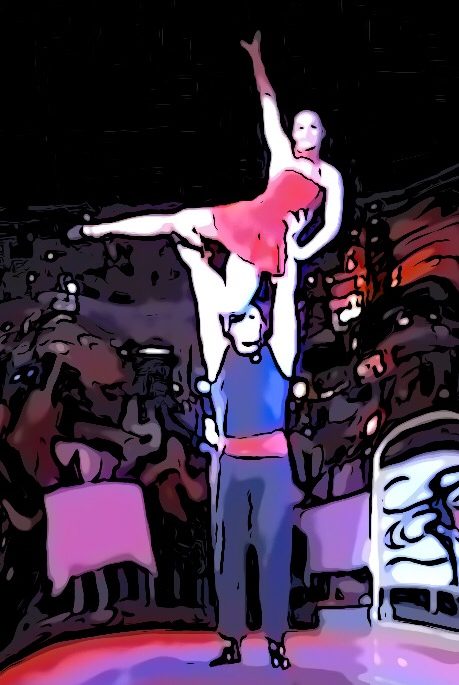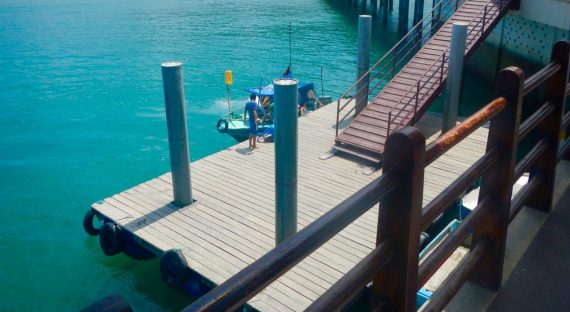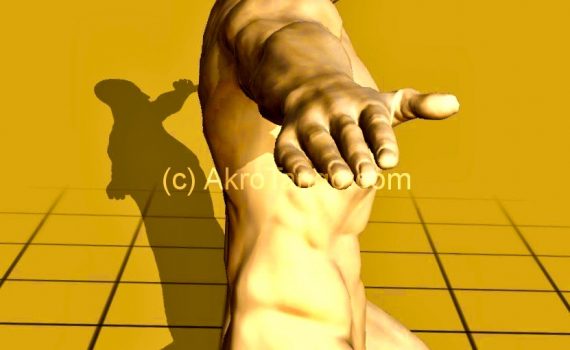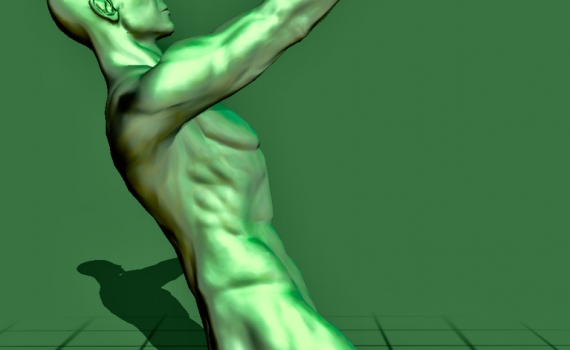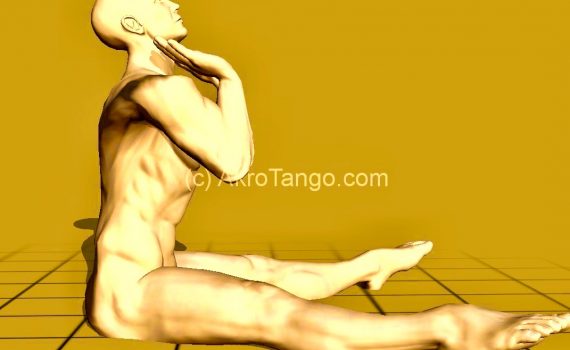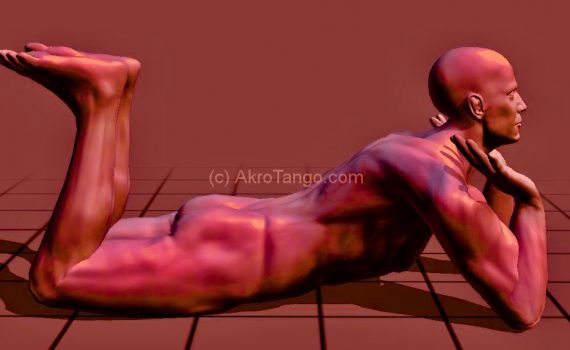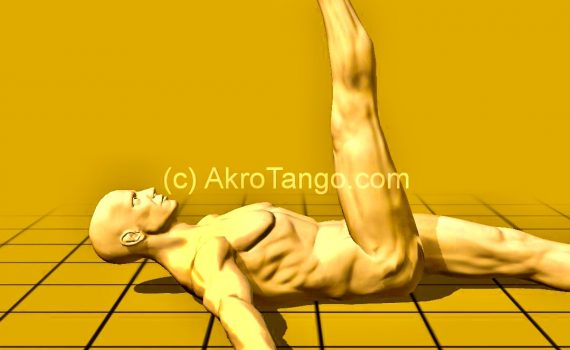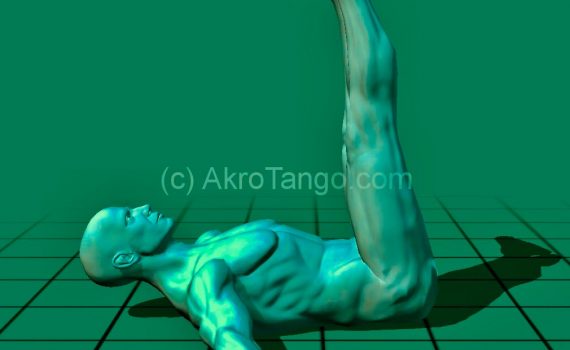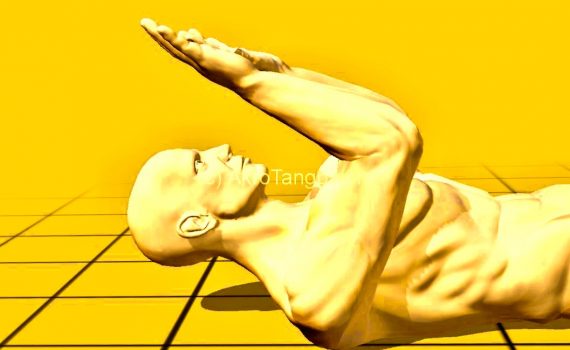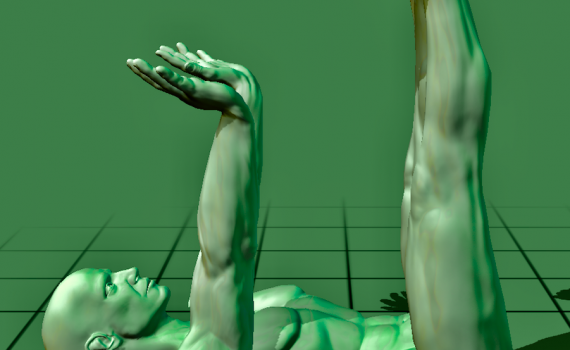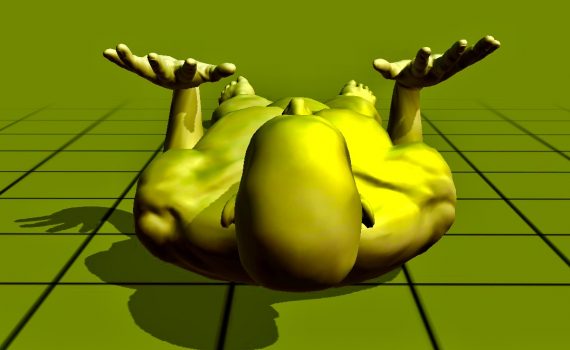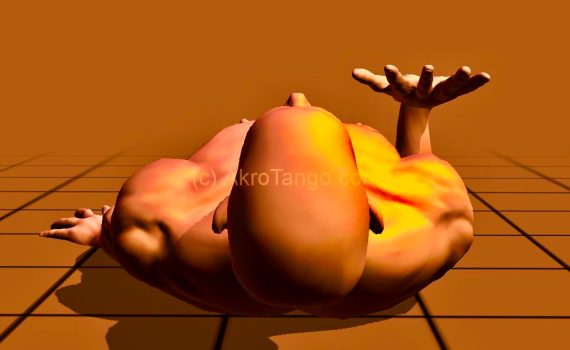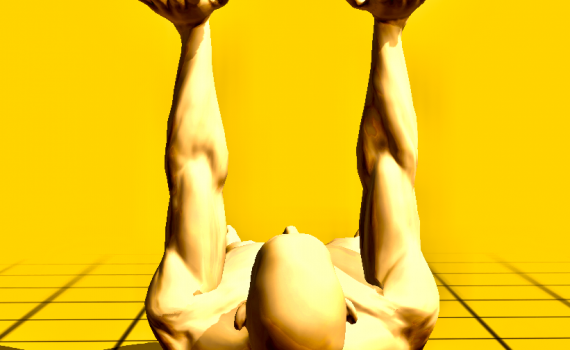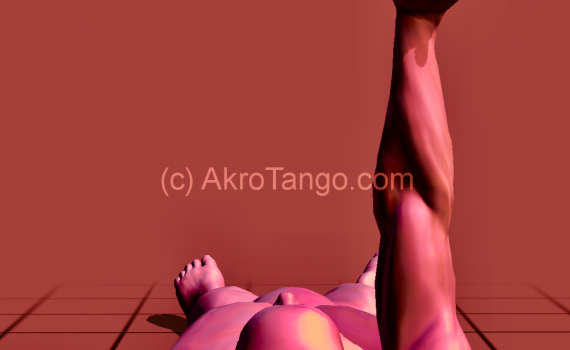The more columns connect the base to the ground, the more stable it is against interference. Similar to the landing stage, he is extremely stable. However, stability always comes at the expense of flexibility. Thus, the base sitting on a bench or chair is affected by shear forces only from the hip upwards. Foot ankles, knees and hip, however, have no effect on the balance. The base can only balance with the joints of the upper body. Kneeling, the base can also use the hip to balance, but should always keep the line of force over his thighs, otherwise he […]
Yearly archives: 2018
The base has no eye contact with the flyer when balancing on the shoulder. In order to nevertheless be able to bring in quick corrections, the base uses his head for balancing. This requires causes the flyer to lean with a slight pressure to the head of the base: 1) The lying flyer is held with the shoulder or arm against the head and as close as possible to the neck. 2) Sitting flyers lean slightly against the back of the head with the belly. Attention: a flyer sitting on the shoulder of the base (for example, the elephant), must […]
In contrast to the standing position while balancing are used only the back and hands, as the hip is fixed and the knees are not usable. Typical tricks in this position are: – Standing on the thighs – figurehead or chair (flyers should turn your feet outwards) – Handstand with held shoulder
The base can choose in this position whether he feels more comfortable sitting or kneeling. Kneeling, he can use the power from the thighs for a possibly necessary high relieving, but at the expense of stability. Short arm: The hands of the base are about shoulder width, as otherwise inwards turned hands of the flyer is the result. The stability is ensured by the alignment of the line of power in the direction of the center of gravity of the flyer. This is not a position for beginners, as they often tend to balance by using a hollow cross! In […]
Initially, this is the most important position for the base, which he should soon master as if in his sleep. Elongation, body tension and stability during the balance are important basics that the base learns best on the ground. It is important that the base with the entire back including shoulder and hip is on the floor and can not roll when loaded.
I have never seen a meaningful trick with only a flyer in this position? And you? After all, there are a few who show amazing skills in this position with 2 flyers … Well … everyone ist creating his limits himself 😉
If the base is lying good and the balance is stable on 2 feet, the flyer may tilt the weight to one foot of the base. The base gets extra stability against rolling away sideways by laying his arms sideways. Bending the free leg is not useful, since it reduces the possibilities of the flyer when landing. And nobody really likes a knee between the legs. Important is when getting the balance to 1 foot, that the rest weight is picked up by the base to avoid a Verscherung. A flyer is pushing himself when tilting from one side to […]
In order to get a balance without hands, the base must learn to pick up the weight of the flyer with his feet. For this the pressure on the front ball of the foot increases, which makes the foot a bit steeper. At the same time, the balance is shifted slightly more in the direction of the own center of gravity. Pre-exercise for the base: Starting position: standing on hands and feet (knees do not touch the ground!) In order to be able to lift off your hands off the ground, the pressure increases in the tiptoes. Do not push-off […]
Snake or butterfly? The appearance is deceptive! Science has not yet succeeded in accommodating the stability and functionality of the hands in such a compact design. We are used of being able to achieve almost anything with them. And yet they are sensitive like the wings of a butterfly. Anyone who has had a tennis or golf arm knows what I am talking about. The most important form of balancing for the base is the one with the hands. These have to balance in strangely twisted positions and compensate significant shearing forces. And without his hands the possibilities of the […]
The arms are held above the head and the forearms are angled… The hands may initially stay in touch with each other… However, the angle of the forearm always adapts to the needs of the flyer, which should never be standing uphill. Examples of meaningful positions of the flyer:: Standing Handstand
This position of the base is the starting point of most tricks while lying. Here are only positions of the flyer meant, in which he supports the base by shoring himself at the base (→ at least 3 contact points!) Examples: shoulderstand on the hands while the flyer shores himself at the knees of the base shoulderstand on the feet while the flyer shores himself at the hands of the base … But also Washing Machines: Washing machines are self-contained transitions, which allow an always same sequence. The flyer rotates around all 3 axes, always balanced and supported by hands […]
The elbows prop up at the ground as close to the hips as possible. The hands remain in the area of the upper arm! The base should expect that his hands will be shear to the outside. If necessary, the hips can also be lifted slightly to lean the hands at it and stabilize them.
Not meant is a short-term one-arm balance due to a high relieve. However, as soon as the entire weight arrives on the arm, the risk of shearing is very great. This not only causes pain in the base’s wrist, but can also cause the flyers foot to kink away. If necessary, the base can lean the hand at the hip. Be sure to keep your elbows as close to the body as possible! I can only imagine of two sensible positions of the flyer: 1-leg standing one-armed-handstand In all other positions either the ground is too close, or the […]
The hands should stay over the shoulders. Initially, the base tends to hold hands at head height. At a load in the middle of the hand, however, the line of force is not right. The result is that the hands get bent towards the head, which can stabilize the base only with a lot of force. To increase the lateral stability against rolling, legs can be straddled.
One of the most difficult positions of the base, because he can balance little with his straight-arm. The hand should always keep above the shoulder within this position. The ball of the thumb stays under pressure → does not yield and also does not create a cavity in the palm of your hand! If the free hand is used for stabilization, it supports the ball of the thumb of the balancing hand. Initially, the free hand will stabilize the Einarmer, and then release carefully. Some flyers immediately feel the loss of stability and break off. The free shoulder stays on […]
